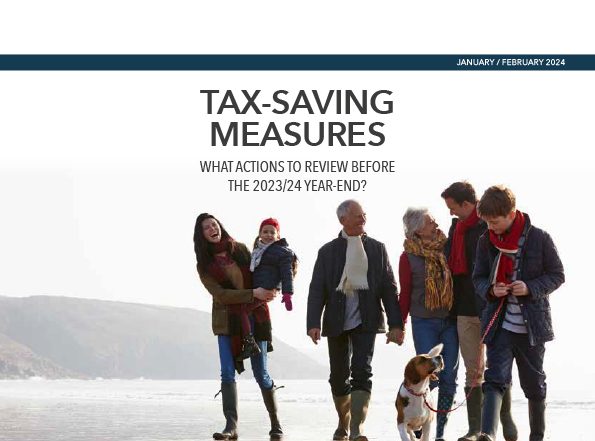Know your pension allowances 2021/22
Pensions are one of the most tax efficient investments you can have, yet many people don’t make the most of their allowances. At Grosvenor Wealth Management, we believe you should take every opportunity to use these allowances to boost your pension fund. Why? Because your investment grows largely tax-free, you receive tax relief on it at your highest rate of income tax (up to 50%) and it is shielded from inheritance tax.

Here are a few areas we can advise you on:
Annual pension allowance
Your annual allowance sets the limit to the amount of pension savings you can make into all your pension schemes in any tax year before you have to pay tax on them. At the moment, this is set at £40,000 per year, so you only pay tax if you go over this allowance.
If you don’t use all your allowance in any tax year, you can also carry forward your unused allowance for up to three tax years, as long as you had a UK-based pension scheme in each year. However, if you access your pension pot or have an annual income of more than £200,000, this can reduce your annual allowance.
If you go over your annual allowance in any tax year, you’ll pay tax on the additional amount at your highest tax rate. This means you should think about your allowances before you make any payments into your pension.
Lifetime allowance
As well as having an annual pension allowance, there is also a lifetime allowance. This is the maximum amount you can put into all your pension schemes during your lifetime without incurring tax. At the moment, this is set at £1,073,100.
If you exceed the lifetime allowance, you’ll be taxed when you draw from your pension – 25% if you draw it as an income, such as an annuity, or 55% if you take it as a cash lump sum. This means you need to keep an eye on all your pension payments to ensure you don’t incur taxes at a time when you should be benefiting from your investments.
Pension contributions – tax benefits
You can claim tax relief on private pension contributions worth up to 100% of your annual earnings, provided this doesn’t exceed your annual allowance. If you pay income tax at 20%, this will be provided automatically, for example, your employer may take workplace contributions out of your pay before deducting income tax, (the ‘net pay’ method). Alternatively, your pension provider will claim 20% tax relief and add it to your pension pot, (the ‘relief at source’ method).
On a relief at source basis, if you pay a higher rate of income tax, you may be able to claim additional relief up to your top rate of tax. Your pension provider will claim the basic rate relief of 20% and you can claim the rest on your self-assessment tax return. You can also use your tax return to claim this relief if your pension scheme doesn’t claim the initial relief automatically, or if someone else pays into your pension fund. This would also apply if you are self-employed.
This is a good way to save tax if you’re a higher rate tax payer. For example, if you earned £60,000 in the 2020 to 2021 tax year, you would pay 40% tax on £10,000. If you put £15,000 into a private pension, your pension provider automatically claims 20% tax relief at source on it. You can then claim a further 20% tax relief on £10,000 of the contribution through your self-assessment tax return.
If you earn over £100,000 a year, you can also look at potential options for using pension contributions to re-claim your Personal Allowance. However, this is a complex process and we’d advise that you speak to your accountant or an independent financial adviser if you’re interested in exploring this.
When it comes to claiming child benefits, pension contributions do not count as part of your income. This means that paying into a pension may also allow you to claim child benefits back, depending on your income and the amount you pay in.
Tax relief when drawing your pension
The introduction of ‘pension freedom’ has created more choice but also more complexity. This means there are opportunities to make the best use of your allowances and tax relief, but you need to take care that you don’t incur excessive tax.
When you come to draw your pension, the first 25% is tax free and anything above this is regarded as earned income. You can choose to draw it flexibly, which allows you to control when and how much you draw to maximise your tax relief. So, if you can afford to limit the amount you draw over the 25% plus any other income below your personal tax allowance of £12,570 per year, you won’t need to pay any income tax on it.
It is crucial to take reliable financial advice when choosing the best way of drawing your pension and get the maximum tax relief. For example, lifetime allowance tax charge is only triggered when you draw money over that amount. Talk to an independent financial adviser and they may be able to advise you how to delay triggering this for many years.
If you don’t pay any tax, then you have a gross annual allowance of £3600 that you can pay into a pension and receive tax relief on. This can be useful if you want to start a pension and eventually pass it on to a child, grandchild, or even your partner if they haven’t worked and built up their own pension. You can top it up each year and it could provide a generous sum for a loved one.
We recently teamed up with HB Accountants and ran a webinar on Tax Allowances in 2021/22 use them or lose them.
The world of pensions and tax relief is a complex one and the rules change regularly. The advantages and disadvantages will also depend on your own personal circumstances. So, to find out how you can make the most of your pension allowances, please contact us…
‘TIME IN THE MARKET’, NOT ‘TIMING THE MARKET’
In the investing world, the allure of quick profits and instant gratification often tempts some [...]
Smart Money January/February 2024
TAX-SAVING MEASURES WHAT ACTIONS TO REVIEW BEFORE THE 2023/24 YEAR-END? Welcome to the January/February 2024 [...]
Should I combine my pensions into one pot?
Combining your pensions could help you save money and keep track of your finances more [...]
A crucial decade: in your 50s
Maximising your earnings or laying down a robust financial plan As you sail into [...]
High costs of private education
The significant decision of choosing a private school for children Choosing the right educational [...]
STRATEGIES TO MINIMISE RETIREMENT TAX
Many pensioners may face a potential tax pitfall as the State Pension escalates and [...]







